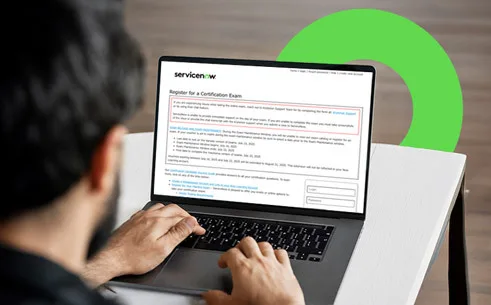Table of Contents
If you are preparing for a Salesforce interview, it is important to be familiar with security-related questions. The interviewer often inquires about your understanding of Salesforce’s security model, as security is a key aspect of the company. If you are getting ready for a Salesforce Administrator interview or need to tackle challenging scenario-based Salesforce interview questions on security, this blog will assist you in preparing effectively.
We have organised and simplified the essential Salesforce security interview questions and answers, ranging from basic to complex real-world scenarios. So, what are you waiting for? Let’s explore these questions without delay.
Basic Salesforce Security Interview Questions
These questions will test your understanding of the basic and foundational security concepts in Salesforce.
1. What are the different levels of data access in Salesforce?
Salesforce controls data access on four key levels:
- Organization-level: Controls who can log in and access the platform.
- Object-level: Determines which objects a user can access (e.g., Accounts, Contacts).
- Field-level: Specifies which fields on objects are visible or editable.
- Record-level: Controls access to individual records within an object.
2. How does Role Hierarchy affect data access?
The Role Hierarchy grants access based on a user’s organizational role. Users in higher roles (e.g., managers) can automatically view records owned by their subordinates. However, it does not override Sharing Rules or more restrictive permissions.
3. What are Profiles in Salesforce, and how do they impact security?
A Profile is a collection of settings and permissions, where settings determine what users can see i.e. App, Tabs, Fields etc and permission determines what users can do i.e. Create or Edit records. It controls:
- Which apps and objects the user can access?
- What actions they can perform (e.g., create, read, edit, delete)?
Users must have one Profile, but Profiles do not control record-level access.
4. What is the difference between a Profile and a Permission Set?
A Profile is assigned to a user to define their baseline access. Whereas, Permission Sets provide additional access beyond the profile. For example, if a user’s profile does not allow access to certain objects, a Permission Set can grant it without altering the entire profile.
Intermediate Salesforce Administrator Interview Questions on Security
The following questions will provide in-depth knowledge about security management and troubleshooting.
5. What are Sharing Rules, and when are they used?
Sharing Rules are control access mechanisms in Salesforce which are used to grant access to specific users or groups beyond the default record-level security. They are commonly used when:
- You need to share records across roles or teams that don’t fit into the Role Hierarchy.
- A specific department needs access to certain records based on criteria.
6. What is the purpose of Organization-Wide Defaults (OWD)?
OWDs determine the default record-sharing setting across the organization. It ensures that records are either private, public read-only, or public read/write for all users unless overridden by Role Hierarchies or Sharing Rules.
7. How do you handle security for external users in Salesforce?
Salesforce provides Communities and Experience Cloud to manage external users. Profiles and Sharing Sets allow you to control what data external users can see, ensuring they have limited access to only necessary information.
Salesforce Data Security Interview Questions
These questions focus specifically on data security principles within Salesforce.
8. What is Field-Level Security, and how is it enforced?
Field-level security ensures that users can only see or edit specific fields on an object. Even if users have access to a record, they may not see restricted fields, ensuring sensitive data is protected.
9. How does the Shield Platform Encryption work?
Salesforce Shield Platform Encryption adds another layer of security by encrypting data at rest. It ensures that sensitive information (like PII) is encrypted even when stored within Salesforce.
10. What are Login IP Ranges and Trusted IPs in Salesforce?
Login IP Ranges restrict where users can log in, ensuring they only access Salesforce from trusted networks. Trusted IPs bypass two-factor authentication (2FA) for users logging in from familiar locations.
Scenario-Based Salesforce Interview Questions on Security
Here are some practical questions where you need to demonstrate your problem-solving abilities.
11. A manager wants to view all his team members and opportunities, but Sharing Rules are not working. What would you do?
In this case:
- Check if the Role Hierarchy is correctly set up, as managers should inherit access.
- Verify if the OWD (Organization-Wide Defaults) for Opportunities is set to Private.
- If Sharing Rules don’t solve the issue, consider Manual Sharing or Apex Sharing.
12. A user cannot see a field, even though it is visible in the Page Layout. What might be the issue?
The likely reason is that Field-Level Security settings are restricting the user’s access to that field. Check the user’s Profile or Permission Set to ensure they have access.
Advanced Salesforce Admin Interview Questions on Security
These questions test more technical and administrative expertise.
13. What is the “View All” and “Modify All” permission?
These permissions allow a user to view or modify all records of an object, regardless of record ownership. They are useful for administrators but should be granted sparingly to avoid data exposure risks.
14. How can you audit login attempts in Salesforce?
Salesforce provides Login History and Event Monitoring (part of Shield) to track user login attempts and detect suspicious activities. Admins can monitor failed logins and enforce MFA (Multi-Factor Authentication).
15. How do you secure APIs in Salesforce?
API security in Salesforce involves:
- Using OAuth tokens for authentication.
- Setting IP restrictions for API access.
- Monitoring API usage with Event Monitoring tools.
Salesforce Security Best Practices and Troubleshooting
These questions focus on how to manage and enforce security effectively.
16. What is Two-Factor Authentication (2FA) in Salesforce?
The two-factor authentication, also known as 2FA, requires users to verify their identity with a second factor (like a code sent to their mobile) when logging in, ensuring extra security.
17. What are Permission Set Groups, and how do they help?
Permission Set Groups bundle multiple Permission Sets into one, making it easier to manage access for users who need permissions across multiple areas.
18. What are Session Settings, and how do they affect security?
Session Settings control session timeouts, IP restrictions, and idle session limits. These help reduce the risk of unauthorized access by ensuring users are logged out after inactivity.
19. What are Profile Password Policies?
Profile Password Policies allow admins to set rules for password length, complexity, and expiration for different user groups, ensuring users follow security standards.
20. How do you handle security reviews in Salesforce?
Security reviews involve:
- Conducting regular audits of Profiles, Permission Sets, and Sharing Rules.
- Ensuring inactive users are deactivated.
- Reviewing the Login History for suspicious activities.

Final Word
Salesforce security is a very broad topic. Being well-prepared with questions around it can make all the difference during interviews. Mastering these Salesforce security interview questions will give you a solid understanding of how to protect data, manage permissions, and solve real-world challenges. Whether you’re facing data security in Salesforce interview questions or advanced scenario-based ones, confidence and knowledge will be your best allies.
Lastly, we wish you good luck preparing for that interview! With this knowledge, you’re ready to ace those Salesforce Admin interview questions and land your dream job.
Join our newsletter: Get daily update on Salesforce career insights & news!
Join Now!
















